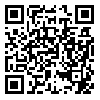Volume 5, Issue 3 (2014)
LRR 2014, 5(3): 165-162 |
Back to browse issues page
Download citation:
BibTeX | RIS | EndNote | Medlars | ProCite | Reference Manager | RefWorks
Send citation to:



BibTeX | RIS | EndNote | Medlars | ProCite | Reference Manager | RefWorks
Send citation to:
Latif Nejad F, Sojoodi F, Pour Khaleghi M. The Stages of Textual Perception in Sepehrie’s Poetry: Based on Beaugrande & Dressler’s Approach. LRR 2014; 5 (3) :165-162
URL: http://lrr.modares.ac.ir/article-14-7271-en.html
URL: http://lrr.modares.ac.ir/article-14-7271-en.html
1- Ph.D. Student, Dept. of Persian Language & Literature, Ferdowsi University, Mashhad, Iran
2- Associate Professor, Dept. of Semiotics & Linguistics, University of Arts, Tehran, Iran
3- 3. Professor, Dept. of Persian Language & Literature, Ferdowsi University, Mashhad, Iran
2- Associate Professor, Dept. of Semiotics & Linguistics, University of Arts, Tehran, Iran
3- 3. Professor, Dept. of Persian Language & Literature, Ferdowsi University, Mashhad, Iran
Abstract: (6811 Views)
The current research, taking into account three standards of Beaugrande & Dressler’s textual-cognitive model i.e. cohesion, coherence, intertextuality, explains the four-fold stages of textual perception in Sohrab Sepehrie's poetic collection Zendegi-ye Khwabhâ (Dreams’ Life). The aim of the study is to find a new analytical method of the contemporary poetry that is identified through the text hence; it is a collection of identical and mental processes that gradually ring forth the method of understanding and stages of perception to readers. Based on the above model, this study elaborates on a quadric procedure, consisting of parsing, concept recovery, idea recovery and plan recovery for perceiving Sepehrie’s poetry. Here, “parsing” is achieved through collocation; “concept recovery”, through finding the schema; “idea recovery” through taking a sequence of actions and looking for background knowledge and intertextuality; and finally the “plan recovery” through attachment. In other words, a receiver arrives at sequence of actions following collocations that fills the gap in the text and discovers the poet’s schema through sharing his/her background information with instances of intertextuality. Sepehrie succeeded in expressing his metaphysical experiences in a compact way through repeating and describing a chain schema via appealing to surrealism and mysticism as elements of intertextuality.
| Rights and permissions | |
 |
This work is licensed under a Creative Commons Attribution-NonCommercial 4.0 International License. |






